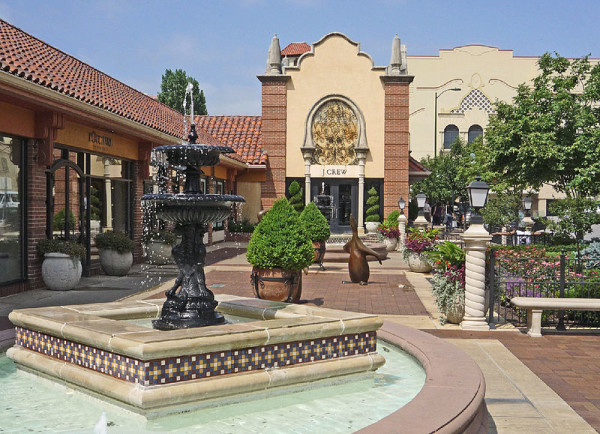The Country Club Plaza, Our Retail Claim To Fame
Bo Lings, Brush Creek, Cricket West, Halls, J.C. Nichols, Plaza Lights, Plaza Art Fair, Plaza Theater, Woolworth’s, Emery, Bird & Thayer
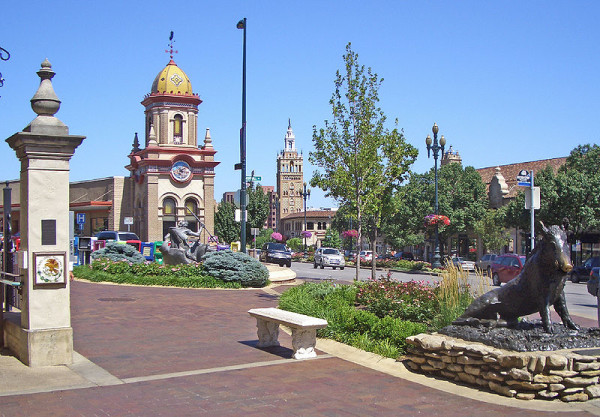
Our Country Club Plaza in Kansas City, Mo., has evolved over the years, though never losing its historic and Spanish-inspired charm. Today shoppers can find chain retailers such as Burberry, Coach, Northface and Victoria’s Secret, but the landscape and businesses looked quite different when the Plaza first developed in the mid-1920s. Doctors and grocers were among the first occupants.
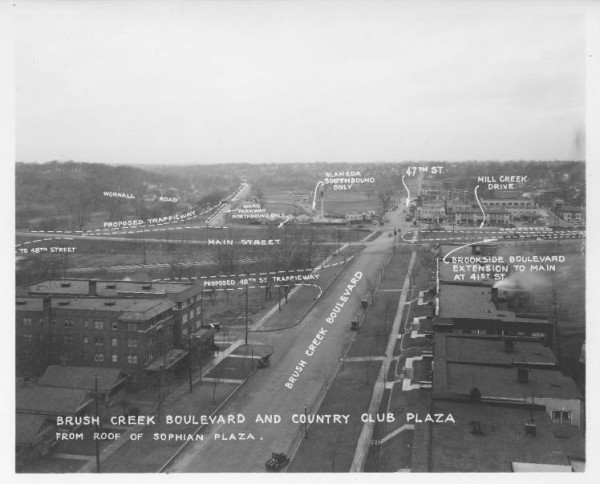
Some things haven’t changed, however. The Plaza boasts a residual vibrant culture, stunning architectural nods to Spanish design and long-running festivals and traditions — like The Plaza Art Fair, a can’t-miss Kansas City annual event dating back to 1932. The beloved Plaza lighting tradition on Thanksgiving began years ago in 1925, with a single light strand decorating the Suydam Building (later renamed the Mill Creek building).
It was the dream of J.C. Nichols, namesake of Nichols Rd., who transformed a Brush Creek swampland (also occupied by a hog farm, a stone quarry and an abandoned Razor Park, a once black-only park) into a bustling area of retail, commerce, festivals and first and foremost, beauty. The metamorphosis was inconceivable, seeing as the land where the Plaza now stands was platted and sold, but undesirable. Landowners, discouraged by the unsightly valley and zigzagging Brush Creek, failed to develop the properties so that it became a literal “dumping ground.” Old J.C. peered through the mess, saw opportunity, and seized it.
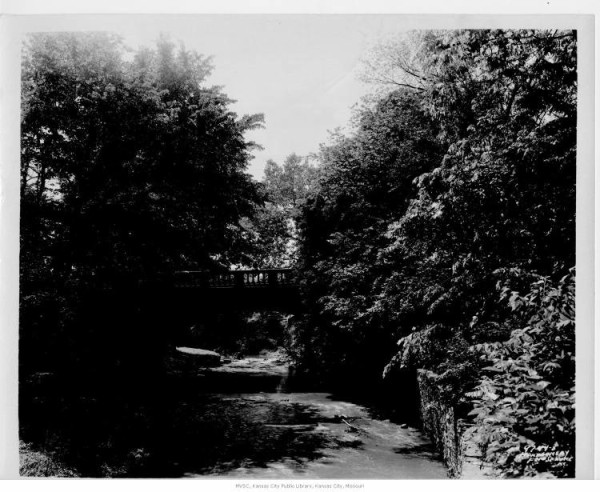
courtesy of Missouri Valley Special Collections
The plans for the Plaza (the Spanish word translates in English as “marketplace”) were made public in 1922, though plenty of work had already gone into its foundation. Nichols, with his steadfast belief in the value in hard work, actually graded the streets himself alongside John Taylor, who continued in business with Nichols in the Nichols Company. Together they also laid sidewalks through the area – very unlike the pavement we tread on today. These were made of wood purchased from a nearby lumber company residing with the hog farm and abandoned Razor Park in the swampland.
The Brush Creek we know at present is a man-made variation of its original path. The creek actually once ran directly through the now-shops of the Plaza. It was manually straightened, and in the 1930s, paved as part of a large sewer project (funded by the Nichols Company), the supplies provided by none other than Boss Tom Pendergast’s Ready Mix Concrete Company.
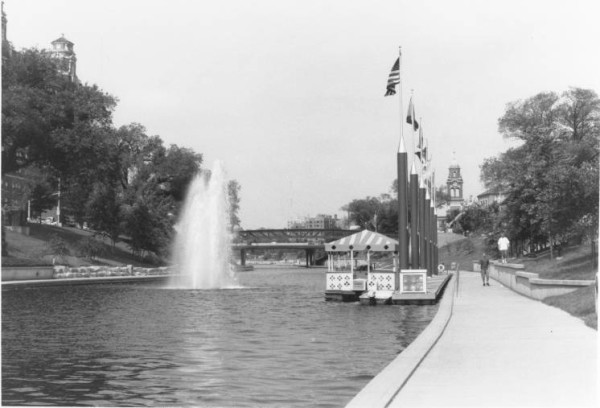
courtesy of Missouri Valley Special Collections
The Beginning
Nichols’ time in Europe, and particularly Spain, enamored him to the architectural style, sculptures, fountains and towers – the beauty of it all inspired him so much he eventually created his own little piece of Spain in the heartland of the United States. Savvy business moves, the devotion to do the tedious work and the brilliance of Plaza designer Edward Delk brought Mr. Nichols’ dreams into fruition.
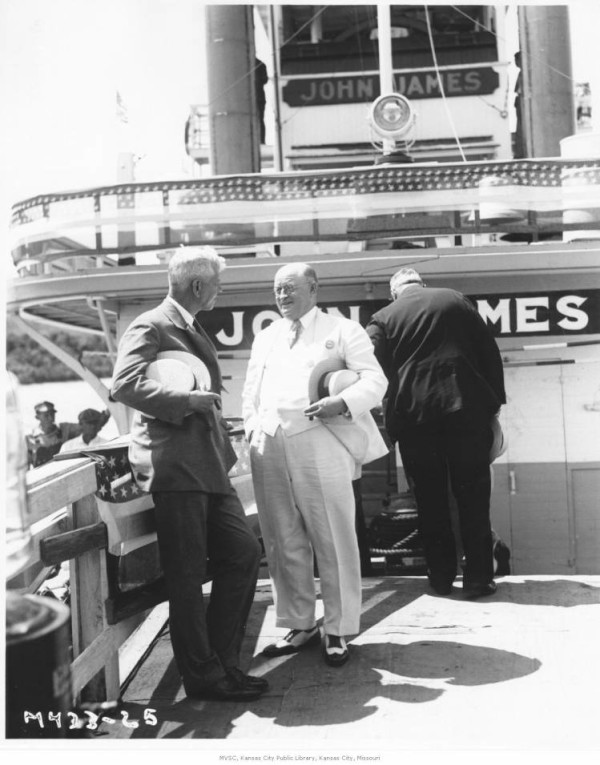
His dream consisted of small shops, restaurants, music halls, theaters – an entertainment and culture hub of which the city then lacked. Though Nichols hosted hopeful buyer and investor tours of the area in a horse-drawn buggy, the ultimate design was to be the first shopping center in the world to accommodate a growing trend… the automobile. Yep, parking garages and extra-wide paved streets provided plenty of spots for people coming to the Country Club Plaza by car.
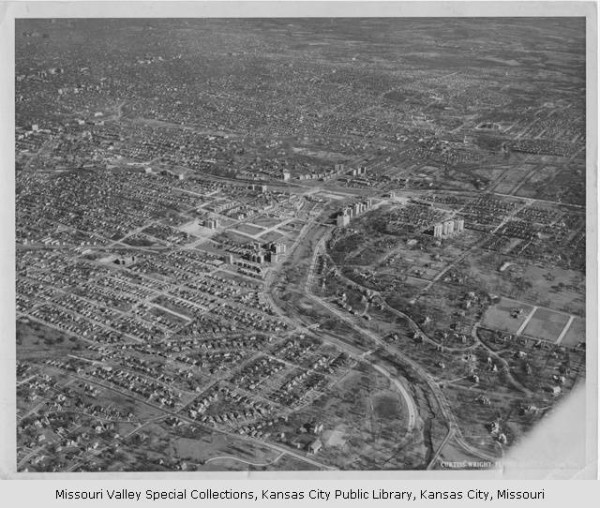
courtesy of Missouri Valley Special Collection
And by car, on foot, by the Country Club streetcar, they did come–and in masses. As the Plaza expanded, and new buildings and businesses cropped up everywhere, the crowd only grew larger. With the Plaza lights and the Plaza Art Fair, visiting numbers multiplied exponentially, including both locals and travelers from near and far.
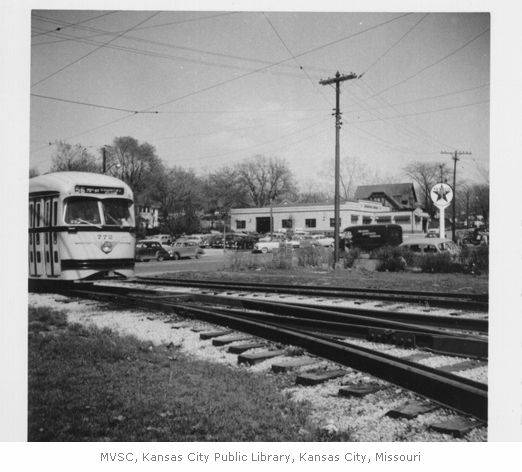
courtesy of Missouri Valley Special Collections
A flurry of trades — physicians, artists, shops, etc. — helped bring the people to the Plaza. The first building to be constructed: the Suydam (later renamed Mill Creek) building at Mill Creek and 47th Street – the very same to be decorated with the first string of lights later at Christmas in 1925. Next to come along was Fred Wolferman Grocery, which attracted at least 10,000 eager customers in its first week of business at 47th Street. The owner of Robinson Shoe Store in downtown Kansas City opened a second location on the Plaza in 1924, and the following year both the Triangle and Balcony buildings were completed. Close to 40 businesses already operated within the Plaza by 1925.
1928 was quite the year – the Plaza Theater opened (an embodiment of Nichols’ cultural center), with capabilities for both the silver screen and live plays and concerts. The corner of 47th and Wyandotte Streets teemed with patrons.
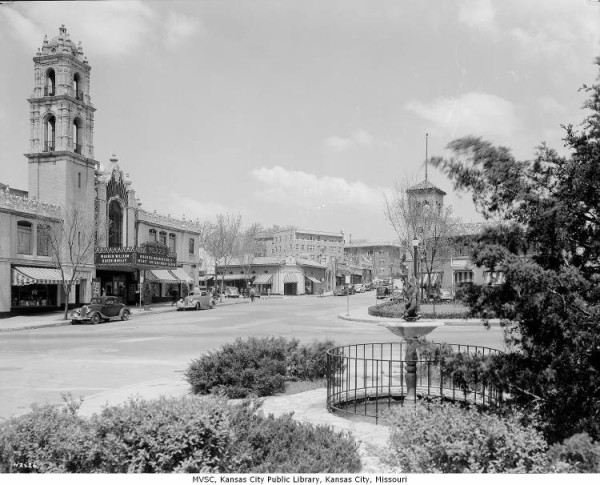
courtesy of Missouri Valley Special Collection
Woolworth Dime Store commenced business at Pennsylvania and Nichols Rd., succeeding a pony-ride attraction and preceding today’s Saks 5th Avenue.
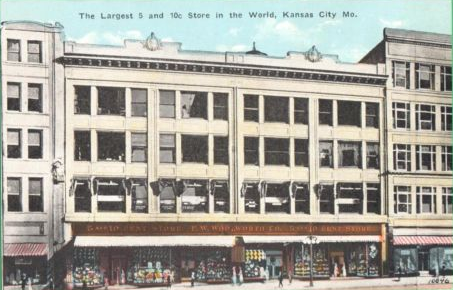
The recently-closed Jack Henry Clothing Company’s original location was once home to a miniature golf course in the early Plaza heyday. Woolf Brothers Clothing opened shop on the Plaza in 1880 on Main Street; their previous headquarters had been located in Leavenworth, Kan. The move was a good one – Woolf Brothers grew into a renowned clothier.

courtesy of Missouri Valley Special Collection
With all this new biz and opportunity, naturally, housing came along. Apartment construction around the Plaza area began in the 1920s. It was in one of these buildings – the Riviera Apartments – that the author Ernest Hemingway lived whilst working as a cub scout for the Kansas City Star.
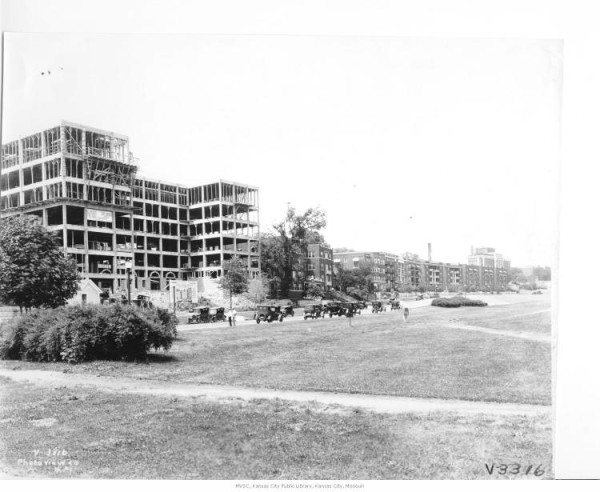
courtesy of Missouri Valley Special Collections
The 1930s and ’40s witnessed grand progress, with the addition of Sears Roebuck & Co. on Nichols Rd., the completion of the Plaza Medical Building, and various outlets for learning and entertainment. The Plaza housed a cooking school, bridge classes, fashion shows and debuted the first annual Spanish Fiesta in 1936, with more than 20,000 attendees. The Plaza Art Fair began in 1932, and Bo Lings opened at its first location on 48th Street (the building’s destruction in 1977 by flood prompted them to move locations). Emery, Bird and Thayer, one of the city’s largest retailers, launched a second store branch at 47th and Broadway — though this location was without the company’s famed tearoom. The Plaza Bowl opened in 1943 at 430 Nichols Rd., and bowling drew a popular following in Kansas City. Not to mention, a larger Plaza patronage.
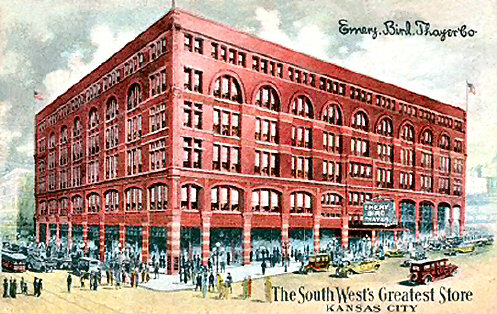
courtesy of Vintage Kansas City
Shops like Mindlin’s at 47th and Wyandotte Street and Cricket West at 47th and Wornall flourished through the 1950s.
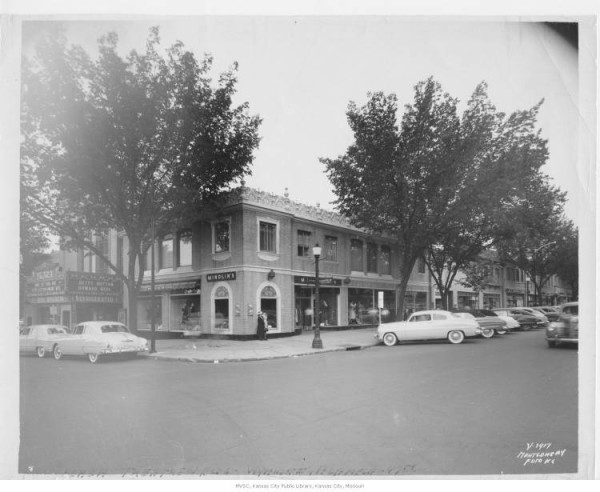
courtesy of Missouri Valley Special Collections
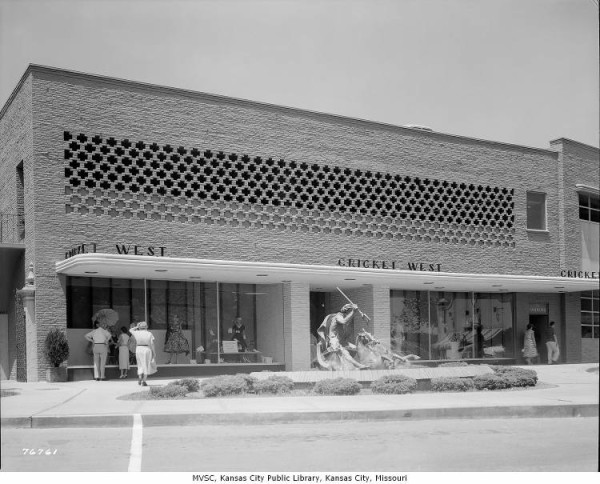
courtesy of Missouri Valley Special Collections
But Halls, oh Halls – its coming in the 1960s, along with Swanson’s Store (Swanson’s old spot is now home to the Cheesecake Factory and the fountain of Bacchus), changed the whole Plaza game. Department stores! These retailers altered “the shopping atmosphere” of the area, according to The Plaza publication.
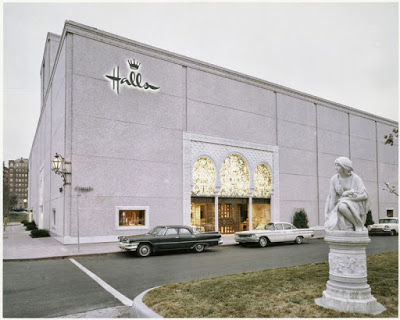
courtesy of Tony’s Kansas City
But in 1977, Brush Creek — molded, re-aligned and paved by Nichols and company — devastated Nichols’ dearest Plaza. The beautiful buildings drowned under feet of water. Luckily, Nichols wasn’t around any longer to see the mess, but his son Miller (who took over the business when Nichols died in 1950), sprung to action. The Plaza Art Fair was due in just 10 day’s time. Kansas City’s resilient reputation emerged, and as Miller Nichols pledged to have the Plaza cleaned up in time to host the fair, Kansas Citians came together to aid in the hard work. And the art fair, indeed, continued as smoothly as ever.
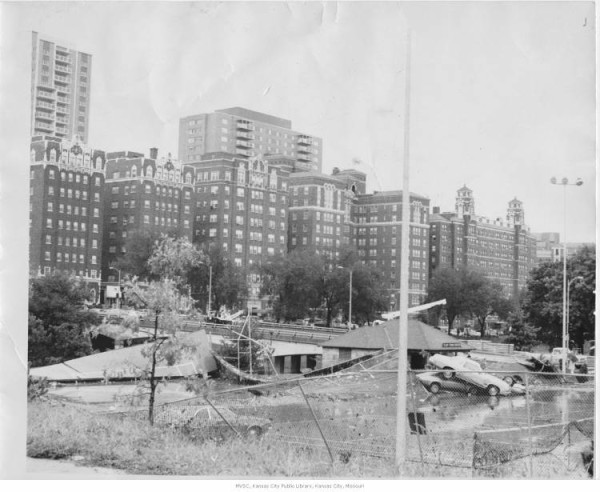
courtesy of Missouri Valley Special Collections
Today, there are many spectacles to see on the Plaza. The “outdoor art gallery” of Nichols’ vision contains many pieces directly shipped from Europe, acquired during Nichols’ travels there. The fountains abound around the Plaza, complemented by lush landscaping and sculptures sprinkled throughout. The Plaza Time Building, a more than 100-foot tall clock tower featuring four faces erected in 1947, is a striking homage to the Palacio de la Equitativa in Madrid, Spain.
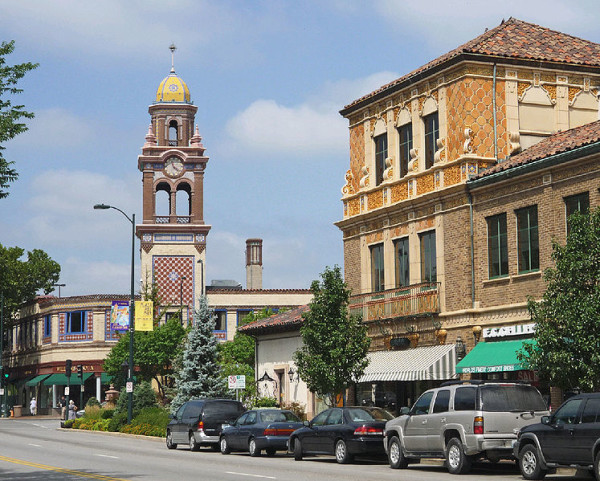
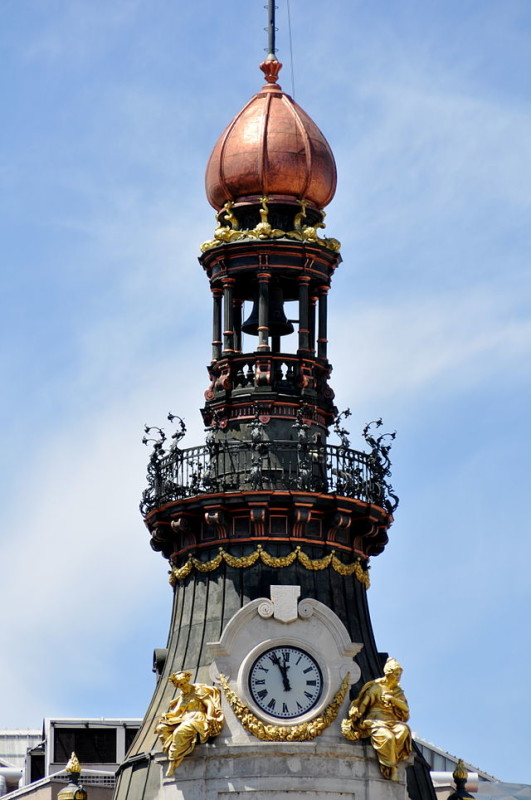
Madrid, Spain
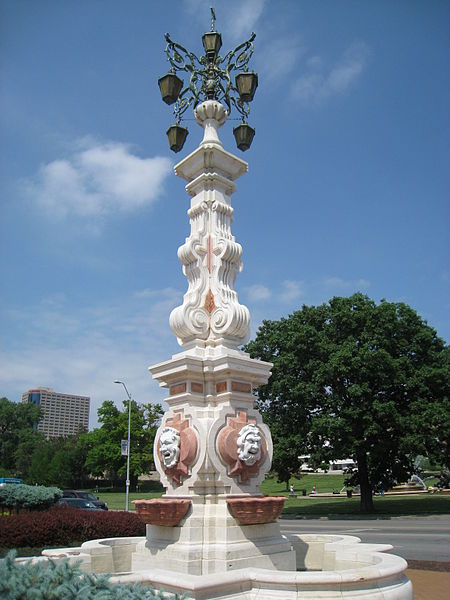
As previously mentioned, the Plaza lighting is – how do I say this? – a big deal in Kansas City.
This is what it was like in the 1940s:
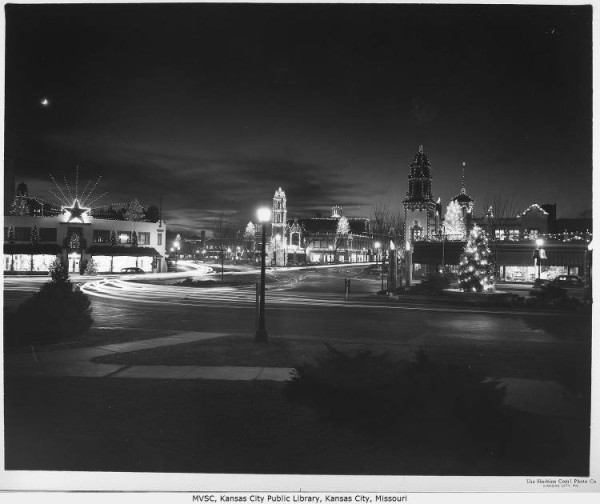
courtesy of Missouri Valley Special Collections
And in the 1950s:
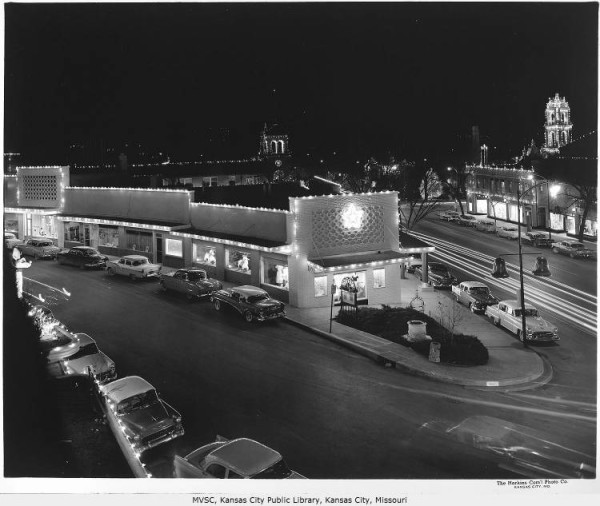
courtesy of Missouri Valley Special Collections
And today?

courtesy of Best Western Seville Plaza
Nichols’ masterpiece of an urban retail center is so much more than just that – the Plaza profoundly inspired Kansas City’s history, culture and progress.











